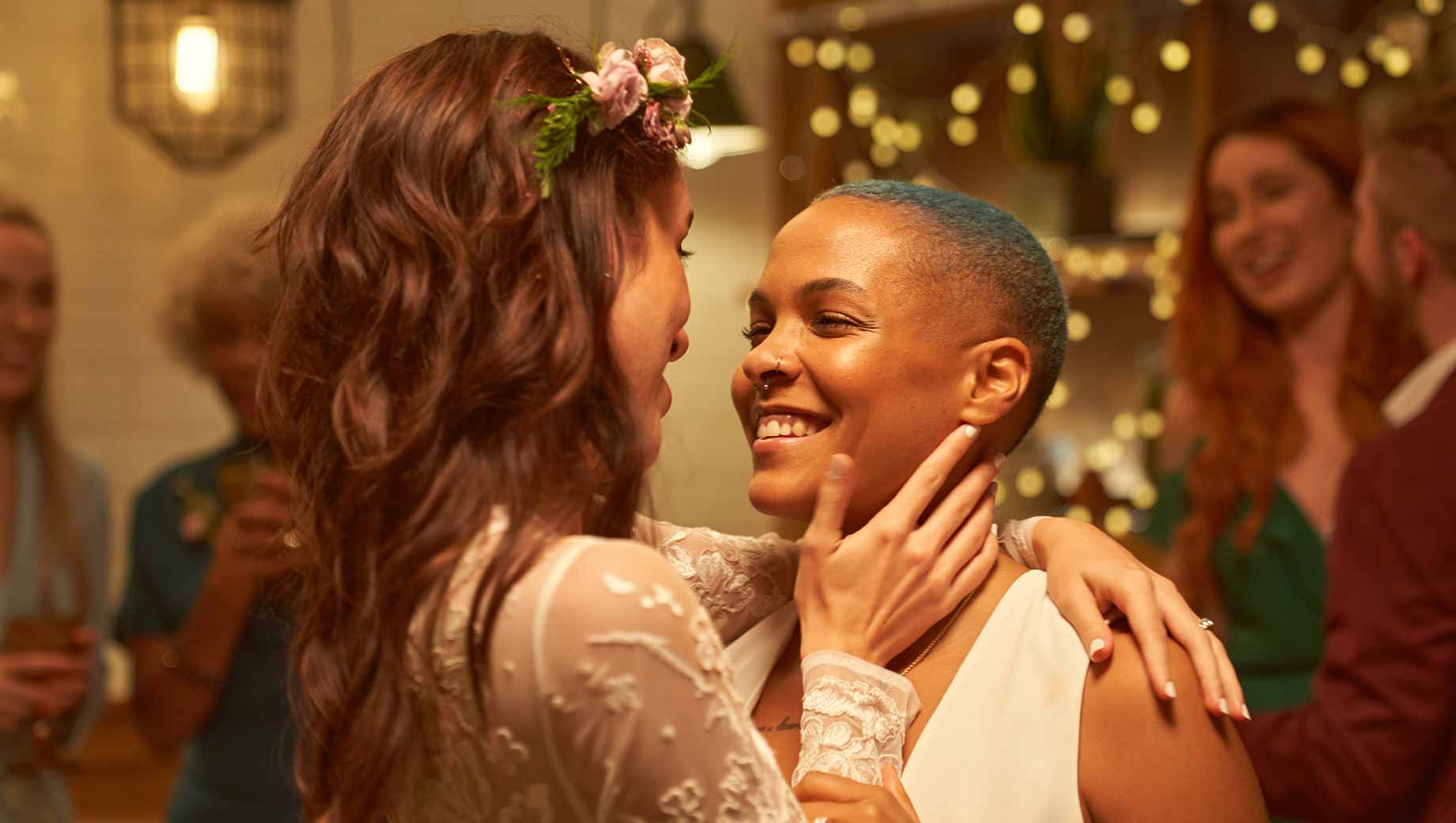The only constant in life is change, it has been said, and we are seeing that maxim exemplified by changes in the normative structure surrounding sexual behavior and marriage in American society. Gallup's latest update shows a continuing increase in the public's agreement on the moral acceptability of a series of behaviors relating to sex and marriage. Americans, in short, are becoming more tolerant in their views of what is and is not acceptable. The causes of these shifts are not precisely determinable, but to the degree they represent a shift in actual behavior, these changes could be harbingers of cultural transformations that affect the U.S. economy and population wellbeing.
Six behaviors that relate directly to sexual behavior and marriage are included in the list of issues in Gallup's May updates. Americans have become more likely to say that all six are morally acceptable compared with baseline measurements taken between eight and 20 years ago. Views that gay and lesbian relations are morally acceptable have increased from 40% to 69%, having a baby outside of marriage from 45% to 67%, sex between an unmarried man and woman from 53% to 73%, divorce from 59% to 79%, polygamy from 7% to 20%, and sex between teenagers from 32% to 43%. (All but one of these issues were first rated between 2001-2003; the baseline for sex between teenagers is 2013).
Sociologists define norms as shared expectations of behavior in certain situations. It is difficult to measure norms precisely, but the Gallup questions about moral acceptability provide a good approximation. The increase in the percentage of the population saying the six behaviors are morally acceptable indicates a significant change in the normative proscription of sexual behavior outside of the traditional heterosexual marriage arrangement.
Views on "having a baby outside of marriage" provide a good example. Twenty years ago, 45% of Americans said this behavior was morally acceptable, suggesting a lack of normative consensus in either direction. Now, 67% of Americans say it is acceptable, a clear indication of a much-diminished norm "frowning" on what used to be considered stigmatized behavior. In other words, the social shame heaped on the act of having a baby outside of marriage today is significantly muted from what it was 20 years ago. In a similar fashion, Americans can engage in other behaviors relating to sexual relations with less concern about societal disapproval than in years gone by.
Are Changes in Norms Related to Actual Behavior?
These measures of societal expectations provide valuable data for understanding collective thinking about sex and marriage. But as we know, norms about what is considered acceptable are a different matter than actual, real-world behavior. All six of the behaviors under discussion here -- gay and lesbian relations, sex between unmarried people, having a baby outside of marriage, sex between teenagers, divorce and, to some degree, polygamy -- have occurred with variable frequency in American society for centuries whatever the prevailing normative context. Norms can affect behavior but certainly do not control it. As archeologist Timothy Taylor has noted, "That's not to say that cultural norms keep people from exploring the taboo, but only what is admitted to openly."
Unfortunately, we don't always have a way of measuring the relationship between norms and related behaviors with precision, mainly because we don't always have reliable measures of their incidence. We do know, as an example, that despite the increasing numbers of Americans who say that divorce is morally acceptable, its actual incidence appears to be going down, not up. On the other hand, the increasing numbers of Americans who say that having a baby outside of marriage is morally acceptable have clearly been accompanied by an actual increase in that behavior, with about four in 10 babies in the U.S. now born to unmarried mothers.
But we don't have ways of accurately comparing attitudes and real-world behavior in relationship to sex between unmarried men and women, gay and lesbian relations, sex between teenagers, and polygamy. It is certainly possible that the occurrence of these behaviors has increased over time in lockstep with the normative shifts, but we can't demonstrate that empirically. For example, the perceived moral acceptability of gay and lesbian relations has jumped substantially over the past 20 years. But it is quite possible that the actual incidence of same-sex relations has been stable even as the public acceptability of such relations has shifted.
The bottom line here is that we cannot assume that shifts in the perceived moral acceptability of certain behaviors are directly related to their actual occurrence in the real world. It may be that changes in behavior drive normative shifts, or that normative shifts drive behavioral change, or that the two reflect different causal influences altogether.
Marriage and Birth Rates Decline
Both marriage rates and birth rates have been in decline in the U.S. These developments are of general interest but also are consequential for society as a whole. Is it logical to hypothesize that these changes could in some ways be tied up with the loosening attitudes surrounding sex and marriage?
Evidence shows clearly that marriage is associated with a number of positive health and wellbeing outcomes for those involved and presumably for society as a whole. It is also clear that a drop in the birth rate can have serious economic consequences for society, ultimately limiting the pool of available workers, which in turn can limit economic growth and strain the income transfer programs put in place to support older citizens. (Declining birth rates may also, it should be noted, allow more women to be in the workforce, which could be a positive for the economy). If Americans increasingly do not feel they need the sanction of marriage to engage in sexual behavior, marriage rates may decline. And, the decline in marriage may be associated with fewer babies (even if it is increasingly acceptable to have a baby out of wedlock). As one economist and analyst for the Institute for Family Studies concluded after studying the marriage and fertility data in a paper aptly titled No Ring, No Baby, "One vital driver of birth rates is marriage."
All of these relationships are difficult to prove. Observed correlation between the increase in acceptance of certain formerly more taboo behaviors relating to sex and marriage and the decrease in the marriage and birth rates are just that -- correlations; we can't say for sure what is causing what. Attitudes can change to reflect reality, and reality can change as a result of changed attitudes. But the shift in norms does serve, at the least, as a valuable social indicator of significant shifts in sociological structures and demographic trends.
Why the Changes?
We are looking at a 20-year time span with our Gallup measures of attitudes, a blip in the centuries-long history of the country. We do not have attitudinal trend data going back for hundreds of years (I wish we did!), but it's reasonable to assume that attitudes and norms about sexual behavior and marriage have been in flux long before the turn of the most recent century.
Historians point out that America's morals became looser in the late 1800s in the midst of the industrial revolution. There were certainly changes in what was deemed morally acceptable in the Roaring '20s some 100 years ago. Aging baby boomers can remember the so-called sexual revolution of the 1960s when the age of "free love" was coupled with the advent of more widespread birth control, feminism and the general concept of protest against societal norms engendered by the Vietnam War. The shifts in norms over the past two decades are thus most properly viewed not as a unique occurrence but as another in a continuing-over-time series of shifts in cultural and societal expectations about sexual relations, marriage and the family.
This leads us to consideration of possible changes we might see in the years ahead. If current trends are projected out into the future, then we will ultimately see a situation in which there is little cultural disapprobation of any forms of sexual behavior. But the assumption of a continuing linear trend in these attitudes is not certain.
As I noted at the outset, change in society and culture is basically a constant. At the moment, there are many shifts in American economic, societal and cultural patterns that could affect norms surrounding sexual behavior and marriage. These include such things as the dramatic rise in the use of social media with online communities substituting for physical communities, changing demographics, changes in the role models provided by leaders and celebrities, declining religiosity and so forth. How all of these social trends manifest in shifts in societal norms certainly remains to be seen.
Summary
Over the past two decades, Gallup has documented a significant increase in the percentage of Americans who say that sexual behavior outside of marriage, divorce, polygamy, and gay and lesbian relations are morally acceptable. The reasons for these changes are not clear, and the consequences for society and America's future are also not fully determinable. Certain real-world changes such as the decline in marriage and birth rates are, however, clearly measurable, and it's reasonable to assume that shifts in normative expectations about sexual behavior and marriage are part of these shifts.




